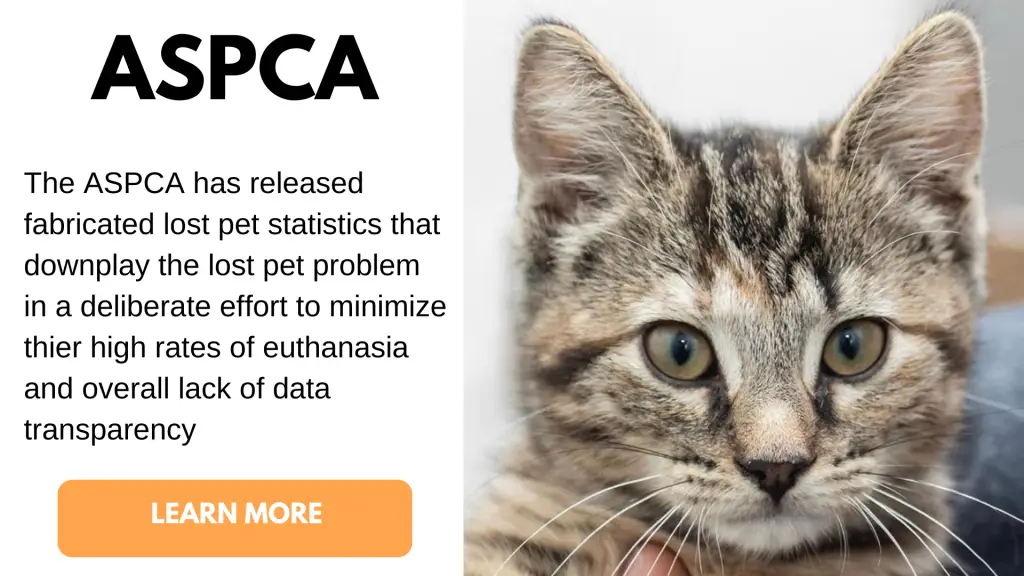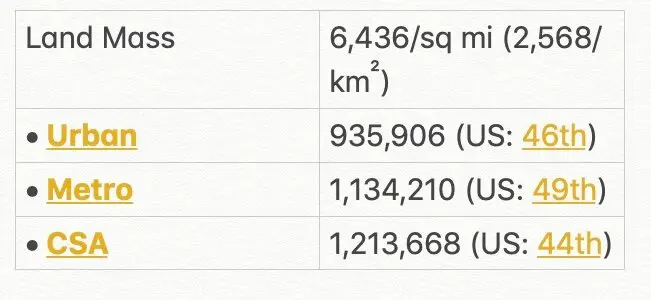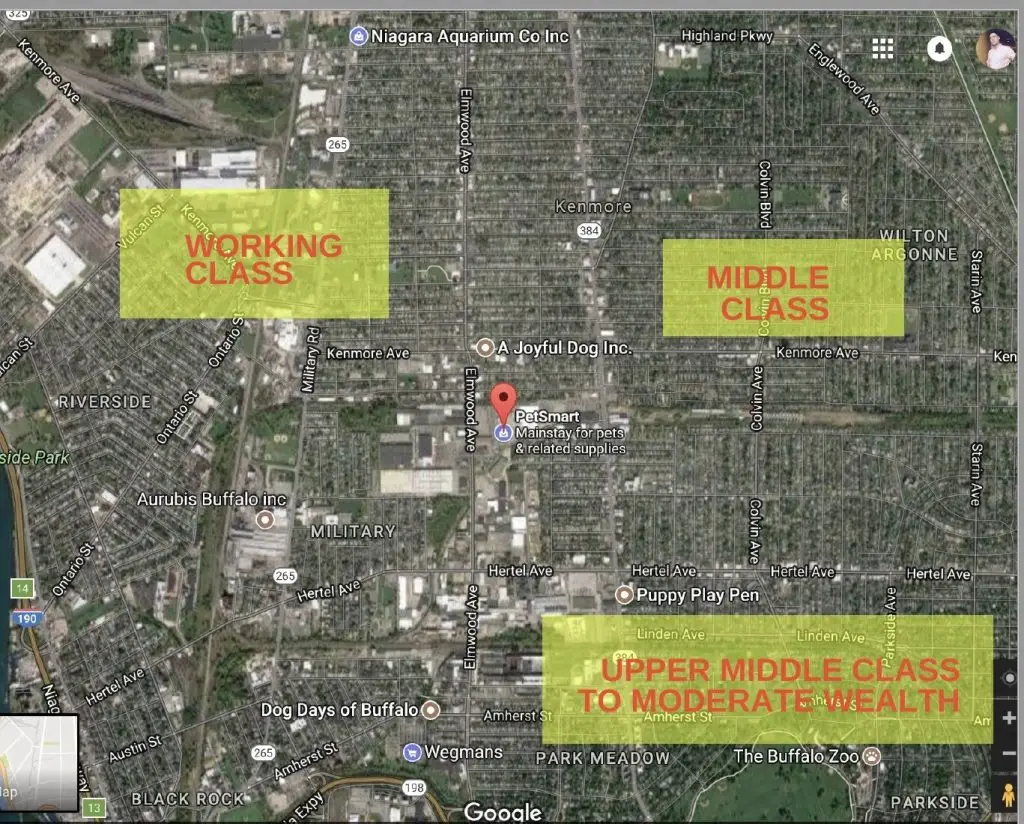
Related Content:
National Survey on Microchip Scanning and the Results
INTRODUCTION
The problem of lost companion animals remains a significant yet frequently underestimated issue within the field of animal welfare. Despite the widespread adoption of microchip technology intended to improve identification and reunification outcomes, the rates of successful recoveries for lost dogs and cats remain disproportionately low. This persistent gap can be attributed to several systemic factors, including inconsistent scanning protocols among veterinary professionals and shelters, the proliferation of unregulated or fraudulent microchip registries, and the disingenuous reporting practices of certain large non-profit organizations that obscure the true scope of the issue. The following analysis, originally conducted between 2015 and 2016, represents one of the most comprehensive examinations of this topic to date. It has been cited in both academic literature and major news outlets worldwide. By evaluating the interplay between microchip registration practices, shelter accountability, and data transparency, this study argues that the lost pet crisis could be substantially mitigated through standardized scanning procedures and stricter regulatory oversight of microchip registries.
The problem over lost pets in the United States is broadly recognized, but ‘actual’ statistics are hard to come by as no national reporting structure exists. Animal care and control agencies are not uniformly required to keep stats on the number of animals that are taken in, adopted, euthanized, or reclaimed. We felt the data that had been reported by earlier sources such as the ASPCA was grossly misleading. At the same time, we felt data reported by more reliable sources such as the American Humane Association and the Coalition for Reuniting Pets and Families was out of date and to assume the reported ratios would still hold true seemed totally unrealistic.
Numerous technologies had since been developed in the pet space and Americans spend billions of dollars on their pets annually [3] on ways to secure them. Further, with technological advancements in the computing space, data management, document management, and retention, coupled with the general standards of accountability (of the private sector) and the quantifiable data reported on consumer behavior and overall spend, we theorized the numbers could have only drastically improved.
Dive into the details of our national survey on microchip scanning, complementing the statistics on missing pets.
EARLIER DATA

According to the American Humane Association 1 out of 3 pets become lost at some point in their lifetime and close to 10 million dogs and cats are lost or stolen in the US every single year [1] and according to the Coalition for Reuniting Pets and Families, less than 23% of lost pets in the United States are reunited with their owners.
The American Humane Association is one of the founding members of the National Council on Pet Population Study and Policy- the most accurate gauge of facts and figures of pet euthanasia in the U.S.
Euthanasia statistics:
Out of 1,000 shelters that replied to the National Council’s survey, 4.3 million animals were handled and roughly 64% percent of the total number of animals that entered these shelters were euthanized — approximately 2.7 million animals in just these 1,000 shelters. There are approximately 3,500 animal shelters in the United States. From these numbers we can glean the approximate size of the epidemic and euthanasia rate.
One-third of all dogs and cats in the United States are reported missing in their lifetimes, more than 80% are never found, and between 9,450,000 and 9,632,000 pets that wind up in shelters in the US are killed.
3,500 shelters
-
- 1,000 of which surveyed
-
- 4.3 million pets at 1,000 shelters
-
- 4.3 million pets at 1,000 shelters X 3.5 shelters = 15,050,000 million pets enter shelters in U.S. every year.
-
- 64% are euthanized
-
- 64% of 15,050,000 million = 9,632,000 million pets euthanized
(or)
-
- 2.7 million pets euthanized per 1,000 shelters
-
- 3,500 shelters
-
- 2.7 million X 3.5 = 9,450,000
Secure Your Pet’s Safety
Our pet medical records, lost pet alerts, and pet reunification specialists are accessible 24/7/365. Don’t wait until it’s too late to protect your pet.
From these numbers we can glean an estimated number of pets euthanized in U.S. shelters every year is between 9.4 to 9.6 million.
The American Society for the Prevention of Cruelty to Animals (ASPCA), however, estimates that 7.6 million companion animals enter animal shelters nationwide every year. Of those, approximately 3.9 million are dogs and 3.4 million are cats. Each year, approximately 2.7 million animals are euthanized (1.2 million dogs and 1.4 million cats).
The ASPCA also reports 25 percent of dogs and 24 percent of cats that enter animal shelters are adopted. “It is estimated that approximately 3.7 million animals were euthanized in the nation’s shelters in 2008.” This is quite a big gap in numbers between the same reported source, never the less, the ASPCA represents the generally accepted statistic that is widely used by many animal welfare organizations either way.
In 2009 a study of more than 7,700 stray animals that wound up at the ASPCA showed that dogs without microchips were returned to their owners 2.2% of the time, whereas microchipped dogs were returned to their owners 52.2% of the time. Cats without microchips were reunited with their owners only 1.8% of the time, whereas microchipped cats went back home 38.5% of the time. (Lord et al, JAVMA, July 15, 2009) The purpose of the study was to show that microchipping works. Either way these numbers are distressing.
Conservative estimate (JAVMA study) sample:
-
- 7700 lost pets with microchips
-
- 3850 dogs, 3850 cats
-
- 1848 dogs with microchips were killed (48%)
-
- 2387 cats with microchips were killed (62%)
According to the Coalition for Reuniting Pets and Families (2005), less than 23% of lost pets in the U.S. are reunited with their owners. In contrast, 47% of lost dogs are reunited with their owners in the United Kingdom, where ISO standard chips are available and a more efficient database is utilized.
From this – not accounting for strays (definition of a “stray” needs clarification)- we can also glean a conservative estimate in the US alone at close to 10 million every year as noted.
ABSTRACT
The following survey was conducted sporadically over the course of several months beginning in late 2015 through early 2016 to get a more accurate guage of the approximate percentage of owned dogs and cats in the United States that are reported lost, and of these reported lost pets (specifically dogs and cats), the percentage that are reclaimed by their owners (those that reported the pets as lost) by surveying a sample set indicative of the US pet owning population as a whole.
Taking into consideration what pet owners want to know
-
- If my dog is lost or stolen what is the likelihood I will find him?
-
- Is puppy theft a real problem?
-
- If my dog is lost, what is the likelihood of me ever finding it?
-
- What is the ratio of pets that go missing and are found in the United States?
-
- What is the likelihood of finding your pet?
-
- How many pets go missing in the US?
-
- Where can I find missing pet statistics in the US?
-
- What is the return rate of missing pets?
-
- How many pets are killed in shelters each year?
It is important to note that this analysis was for ‘our’ research purposes only and it was conducted before Peeva was even a company. After identifying the reason why the pet problem still exists today ee wanted to learn the actual extent of the problem before proposing any type of solution before committing any additional time or resources into it let alone building a company around it. We released our findings to the public in 2021 and due to it’s objectivity it serves as the most comprehensive analysis on the subject to date and is therefore cited by many.
Methods
What we did NOT do
We did not aimlessly and randomly dial telephone numbers or conduct a survey online. Online surveys are significant to an extent, but in this instance, the results could have quickly become skewed. Inbound respondents more likely to click a Facebook Advertisement would have more than likely had a pet stolen at some point whereas a vetted list would have prequalified respondents from biased sources such as social media followers of missing pet pages or animal welfare organizations. Randomly dialing phone numbers in every township in say the top 20 markets would have also been extremely time consuming and poor use of resources. Ironically we did this locally.
What we DID do
We surveyed in person a total of 4048 people and we narrowed our qualified sameple set down to 1356 qualified pet owners with a total of 1409 qualified pets*. Pet owners and pet sample set was based on whether or not the survey respondant ever owned a dog or cat as a prior pet within the past ten years. The total amount of which was 1409 pets reported missing. 34.8% of the total pets in our culled down sample set were reported missing at some point. (48%) of which were dogs 676 total and (52%) were cats 733 total. 86% of which were never found. 96% of the cats that were reported missing were never found. 77% of the dogs that were reported missing were never found.
* The number of qualified participants was not proportional to the percent of pets that were included in our culled down sample set
Indicative Sample Set of the US pet owner population as a whole
According to the APPA geography, demographics, interests, income, and lifestyle differences do not reflect differences in pet owner spending. Nevertheless, a sampling indicative of the entire US population was required.

DATA COLLECTION
We stood outside a PetSmart location in Buffalo, NY and surveyed people walking into the store. From a macro view, this may appear to be a limited sample set. However, the location we chose and the pool of shoppers it draws from is indicative of a national sample set. Buffalo is financially and culturally diverse, right up the middle in regards to the top 100 US markets, and overall sample set indicative of the US pet owner population as whole.

Aside from the occasional snowstorm, the area is free of hurricanes and other natural disasters which would skew results. Peeva is also based here.
PetSmart was chosen as is it is the leading brick and mortar pet retailer in the United States. Standing outside a pet store in general increased the odds of finding pet owners.
There are several PetSmart locations in the Buffalo region, but the location we chose borders on a blue collar working class neighborhood to the West, a middle-class neighborhood to the East, and a wealthy area in the Central Park area of North Buffalo to the South. There is also a bus stop at the plaza where the store is located.

We surveyed a total of 4,048 customers entering the store over a sporadic period beinnning on June 6, 2015 and continuing onward thorough November of 2016.

Participants were disqualified
-
- if they never had a pet before in the past
-
- if they relinquished the former pet to a shelter (there were a total of 31 relinquished pets among our 617 survey participants)
-
- if the former pet was a foster
Qualified Participants
Participants were qualified based on whether or not they ever owned a dog or cat in the past before their current pet (if they had one).
4048 total surveyed 426 had dogs and cats at time of survey that had microchips implanted
1356 qualified survey participants (reported a missing dog or cat in the past)
1409 total qualified former pets (total number of pets that were reported missing)
100% of the respondents reported their pet missing to various shelters within 20 miles of where their pet was last seen
(48%) were dogs 676 total-
(52%) were cats 733 total
203 total pets relinquished to a shelter in the past were not included in survey analysis, foster pets were not included in this survey, the number of fosters was not recorded.
FINDINGS
Of the 733 cats that were reported missing at some point
704 were NEVER found
54 in total had microchips
of the 29 total cats that were found
17 had microchips
-
- 2 were found by a vet that scanned the chip
-
- 15 were found at a shelter that scanned the chip
2 were found at a shelter by pet owner calling the shelters (relentlessly)
9 were found from missing pet signs in neighborhood
1 from newspaper
Of the 676 dogs that were reported missing at some point
521 were never found
115 in total had microchips
of the 155 total dogs that were found
78 were found with a microchip
-
- 26 were found at a vet that scanned the microchip
-
- 52 were scanned at shelters
Of the pets that were not found by a microchip
-
- 31 were found by pet owner calling the shelters (relentlessly)
-
- 38 were found by signs
-
- 6 were found from advertisement in newspaper
-
- 2 were found from social media
CONCLUSION: The earlier stats reported are confirmed as our findings are the same.

The pet problem still exists today for a handful of reasons:
Current Technology (limitations)
When it comes to technology resolving the problem over missing pets, numerous technologies have been developed, marketed and sold to pet owners over the past several decades, but the problem has shown little improvement.
From electronic collars and fences, bluetooth collars, QR tags, RFID, and GPS devices pet owners have numerous options to secure their pets and some are better than others while others are totally pointless.
Collars can fall off or be taken off.
Name tags: It’s always a good idea to have your pets name and your telephone number attached to its collar. This way, you can be called if someone finds your pet.
QR tags: Now anyone with a smartphone can scan your pet’s QR tag to be taken to a landing page where your phone number is displayed. You can then be called with the cell phone that was used to scan the QR code. This is the most pointless gimmick out of all technologies available as it adds an unnecessary additional step. Why not just put your phone number on the tag instead.
Bluetooth. Not only is bluetooth inconsistent in itself, it also relies on the correct software and the app needs to be installed on whomever device.
GPS: This is by far the technology with the greatest potential as pet owners can search for their pets current location. There are a handful of companies that offer this and some are more precise than others, but the location information for each is up to the minute. The only limitations have to do with battery life, size, and the fact that the device can be removed from your pet’s collar.
GPS all relies on an external power source which means you would need to recharge your animal… somehow. GPS is also much too large to be implanted into an elephant let alone a small dog or kitten.
The future of GPS will involve nanogenerator technology to power the GPS device which means it will be activated by movement or kinetic energy, but that is far off in the future and contingent on GPS getting small enough to be implantable along with years of testing and FDA approval.
RFID Microchips: Microchips are the only permanent form of ID your pet will ever have because they are implanted. RFID is also extremely reliable as it will work 100% of the time, but it needs to be read by the appropriate reader and the microchip needs to be registered to the pet owner directly in a database offered by a legit pet recovery service that retains the enrollment data, is actively searched, and employs a more than adequate team of telephone support available at all times of day to facilitate a found animals prompt return by answering inbound calls to a toll free telephone line.
Limitations: No standardization: Not all microchips can be read by all microchip scanners. If a microchip can be read, the registry needs to be called. Numerous registries need to be called until a match is found then those registries need to be called. Most registries are understaffed so callers face long hold times. The AAHA pet lookup tool was developed in response to this by saving time as it searches through multiple registries simultaneously. The mission is to increase the odds of bringing a lost pet home by offering participation to as many registries as possible, but there are always a few bad apples. Free registries have been popping up in recent years that leverage their participation as a legitimacy play but fall short of providing an actual service. These registries have led pet owners into a false sense of security over their pets as they fall short of providing an actual service. They exist for no other purpose than to amass marketing lists in the form of free enrollments. Now that most consumer purchases are made online, online data brokers and marketing firms are willing to pay large sums of money for this data for marketing purposes. Pet owners are then spammed with pet related products and services while being misled into a false sense of security over their pets.
The data problem:
The Pet problem is ultimately a data problem. Pet Care professionals lack access to raw data and the ability to pull it all together. There are multiple Practice Info Management Systems, and even more shelter management software options. everything is for the most part offline and data can not be transferred between numerous applications.
Solution
The best way to ensure your pet is never lost is to 1. get a GPS collar and 2. Have your pet implanted with an ISO Microchip and register the microchip ID with a legit pet recovery service that offers around the clock telephone support to facilitate your animals safe and prompt return.
Peeva is the world’s first and only universal pet microchip identification system and centralized microchip database where millions of microchip ids are paired with their own medical records in one centralized database. We can read all microchips, our microchips can be read by all scanners, we are the first and only to read, record, analyze, and catalog any brand of microchip regardless of the manufacturer. With millions of pets enrolled Peeva is also the most comprehensive and actively searched database on the planet. Any brand of microchip can be enrolled in our system and it only takes about one minute and costs less than a decent bag of dog food. We ensure microchips are scanned and read as any pet care professional in our US and Canadian network can scan the chip of any pet in our system to access that pet’s complete life history while instantly notifying the pet’s owner of the precise location. Any brand of microchip can be enrolled with Peeva. It only takes about 1 minute and costs less than a decent bag of dog food.
Protect Your Pet For Life.
Frequently Asked Questions
What percentage of lost dogs are found?
Only a small percentage of dogs that go missing are eventually found. A study indicates that microchipped dogs have a much higher chance of being reunited with their owners (about 52.2%). However, for dogs without microchips, the percentage is startlingly low at 2.2%. Our study also revealed that more than 80% of missing pets are never found.
Why do shelters euthanize dogs?
Shelters resort to euthanasia for various reasons, including lack of space, medical issues, or behavioral problems that make the pet unadoptable. Roughly 64% of the total number of animals that enter shelters are euthanized. This equates to approximately 9.4 to 9.6 million pets in the U.S. every year.
How many dogs are euthanized each year?
It is estimated that between 9.4 to 9.6 million pets are euthanized in U.S. shelters each year. These numbers include both dogs and cats. According to the American Society for the Prevention of Cruelty to Animals (ASPCA), about 920,000 shelter animals are euthanized annually (530,000 cats and 390,000 dogs).
What percentage of lost cats are found?
Microchipped cats are returned to their owners 38.5% of the time, while cats without microchips are reunited just 1.8% of the time. Less than 23% of lost pets, including cats, in the U.S. are reunited with their owners according to the American Humane Association.
What are the odds of finding a lost cat after a week?
It is generally more challenging to find cats that have been missing for an extended period. The longer a cat is missing, the lower the likelihood of finding it, especially if it is not microchipped.
Chances of finding a lost dog after 24 hours?
The sooner you act, the higher your chances of recovering your lost pet. Immediate actions like contacting local shelters, putting up posters, and posting on social media can greatly increase the odds of a quick reunion.



